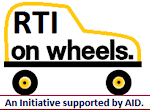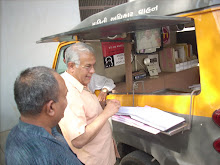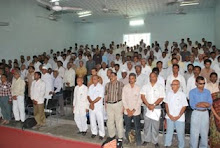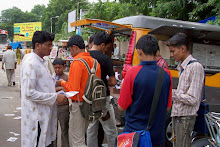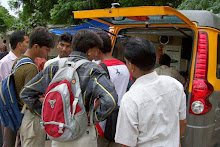Caravan Magazine: Akshay Taree: Ne Delhi: Sunday, August 22, 2021.
he prime minister Narendra Modi’s government has accused the opposition, especially the Congress party, for increasing vaccine hesitancy in India during the novel coronavirus pandemic. Ministers and other members of the ruling National Democratic Alliance and supporters of the government have said that the Congress tried to ridicule the Covaxin vaccine. The union government has heavily promoted Covaxin as an indigenous solution since it was developed entirely by the Indian company Bharat Biotech. It also blamed the Congress for trying to sow doubt about COVID-19 vaccines in the minds of people. In January 2021, Harsh Vardhan, who was then the union health minister, said that “vested political interests” were spreading vaccine hesitancy. A few months later, in April, he claimed that the Congress had been spreading vaccine hesitancy throughout the pandemic.
The Modi government has been quick to point out, and rightly so, that India has not had a history of vaccine hesitancy. What it has refused to acknowledge, however, is that its lack of transparency, unreasonable requirements for access and flip-flops on vaccine policy have been the largest contributors to vaccine hesitancy.
In 2012, the World Health Organisation established the Strategic Advisory Group of Experts on Immunisation and a working group on vaccine hesitancy. In 2014, SAGE working group produced a report that defined vaccine hesitancy as a “delay in acceptance or refusal of vaccines despite availability of vaccine services.” The report noted that vaccine hesitancy is complex and context specific, and varies across time, place, and vaccines. Growing vaccine hesitancy in India is a multi-dimensional problem and more complex than the conspiratorial narrative of a political sabotage of the world’s largest COVID-19 vaccination drive.
On 21 June, India administered 81 lakh doses of COVID-19 vaccines across all states and union territories— a 62 percent rise in the vaccination rate in a single day. The government and its supporters vociferously celebrated the milestone. They gave credit for this success to the revised vaccination policy that allowed free vaccination without pre-registration on the Co-Win app for all adults in state-run vaccination centres. But the government made the policy revision only after pressure from the Supreme Court, civil society and experts who questioned the inclusivity and equity of the previous policy under which 50 percent of vaccines were reserved for sale by private players and digital registration was mandatory.
The new policy that Modi announced on 7 June increased government procurement up to 75 percent and reserved 25 percent of India’s vaccine supply for those who could pay and chose to pay. But the much-celebrated revisions still failed to address issues of equity and profiteering in India’s vaccination programs. Vaccine access is still far from universal. Estimates show that Indian COVID-19 vaccine manufacturers continue to make profits as high as 4000 percent with the current policy.
CURRENT ISSUE
The government’s claim of record vaccinations on 21 June also fell flat within 24 hours as data on the Co-Win app showed a significant, and possibly deliberate, slowdown in the vaccination drive just a couple of days earlier. A report in the journal Nature about China vaccinating two crore people per day for a week in June, also put India’s claim of a vaccination “world record” in doubt.
Additionally, the government’s actions that undercut confidence on COVID-19 vaccines began more than a year ago. For instance, in December 2020, while preparing for the launch of the two vaccines Covaxin and Covishield, the government had assured safety and efficacy of both. However, it allowed Covaxin to be deployed even though there was no data from its trials. Bharat Biotech released Covaxin’s phase-3 data only in July 2021, almost six months after the Drugs Controller General of India approved it. This huge data deficit would likely have fuelled vaccine hesitancy even among medical fraternity, who were the first batch of people to get the vaccine. A survey in June of doctors in Lucknow showed that some doctors preferred to wait for vaccines by either Pfizer or Moderna to be available in India.
The reasons for vaccine hesitancy are always diverse and stem from various structural and historic factors. Poor and marginalised communities have shown hesitancy to India’s previous vaccination programs, such as drives for measles and rubella vaccinations, due to a historical distrust of the health system and lack of health information. But studies have shown a gradual improvement in India for vaccination acceptance among the marginalised, as is seen by a 19% increase of vaccination coverage from 2006 to 2016.
In January 2021, the University of Michigan, in the United States, and the Post Graduate Institute of Medical Education and Research, in Chandigarh, published a study titled Demographics of Vaccine Hesitancy in Chandigarh, India. The paper, which used the standard WHO SAGE vaccine hesitancy scale, showed that scheduled castes and scheduled tribes had 3.48 times greater odds of vaccine hesitancy compared to other caste groups. The study confirmed an overall positive outlook towards India’s universal immunisation programme but found hesitancy around newer vaccines because of the fear of serious adverse effects—this concern has caused hurdles for COVID-19 vaccine drives.
Currently, COVID-19 vaccine hesitancy has been spreading across diverse income and social groups due to multiple reasons. The COVID-19 vaccination program has exacerbated the old causes for hesitancy or created new ones. The new causes include lack of information on vaccine safety and efficacy, a digital divide, a preference for vaccines developed in other countries, gaps in transparency for vaccine approval in India and misinformation.
One such example of a combination of factors possibly encouraging vaccine hesitancy was the rumour about the presence of calf serum in Covaxin. In September 2020, the Indian Council of Medical Research, the apex organisation in India that coordinates biomedical research, and Bharat Biotech published a paper about the use of calf serum in biological research. New-born calf serum is used for the preparation of vero cells, which are tissue-culture cell lines that are used to grow the virus, from which the antigen needed to make the vaccine is extracted. The final vaccine does not contain calf serum. The government could have avoided rumours by putting out a clarification at this stage about the ingredients of the vaccine. It did not.
By December 2020, rumours started circulating about the presence of animal products in COVID-19 vaccines. The Raza Academy, a Muslim community organisation in Mumbai, wrote to the World Health Organisation at the time and sought clarification about the presence of pig extract in the vaccine. According to one news report in March 2021, people in some districts in Haryana told local administrations that they did not want to be vaccinated because they had heard that the vaccines contained cow or pig extracts. Subsequently, on 8 June, a right to information disclosure that reiterated the use of calf serum in vaccine research was distorted to further fuel the rumours. Misinformation has continued to spread in the absence of effective communication at the local, state, and national levels.
In fact, COVID-19 vaccine misinformation has been rampant among all socio-economic categories, including urban and educated communities. The senior lawyer Prashant Bhushan, who has more than two million Twitter followers, has repeatedly tweeted his scepticism regarding COVID-19 vaccines based on poor information. India has also witnessed organised anti-vaccine movements, aided by anti-vaccine subcultures on Indian social media and messaging apps, in metropolitan cities. These movements involve people who are not just vaccine hesitant but also vaccine resistant. The vaccine hesitancy is being unsure about taking a vaccine while vaccine resistance is being absolutely against vaccination. Vaccine resistant groups have been found to be less likely to obtain information from trusted sources and more likely to organise against vaccination.
The growth of anti-vaccine subcultures is not just a sign of a vaccine-communication strategy failure but also a measure of the government’s inability to address civil-rights concerns around vaccination drives, and its larger COVID-19 management strategy.




